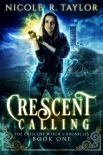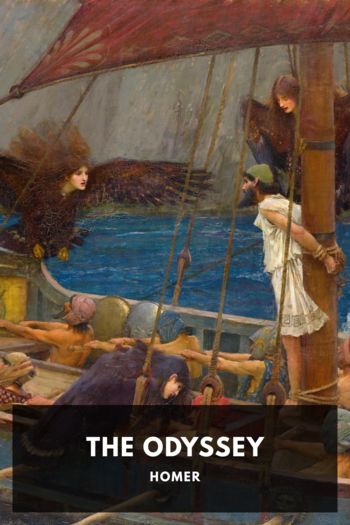The Race, Clive Cussler [inspirational novels txt] 📗

- Author: Clive Cussler
Book online «The Race, Clive Cussler [inspirational novels txt] 📗». Author Clive Cussler
Josephine scrambled out of the nacelle. She stood, arms akimbo, inspecting the wing where the alettone had broken. Then, mirroring the colossal green statue, she raised her right arm like Lady Liberty lifting her torch of freedom and waved to the crowds on the spectator boats. The pasty ripple of horror-stricken faces exploded into the joyous flutter of thousands of handkerchiefs saluting her pluck and good fortune.
As soon as Isaac Bell saw a V-marked Van Dorn Agency steam launch speed to Bedloe’s Island, he whipped his flying machine past the Statue of Liberty’s stern Gallic nose and raced up the Hudson River at sixty miles an hour. Nature had lent a hand with her lethal wind gusts, and it was not a gift he would waste. Josephine was safely on the ground, soon to be protected by armed detectives, and if Harry Frost was lurking on the route ahead, Bell’s decoy was now the only yellow flying machine the killer would see to shoot at.
The tall detective did not have long to wait.
Four minutes later—four miles up the smoke-shrouded river, with Midtown Manhattan on his right and the Weehawken piers thrusting into the water on his left—a high-power rifle slug whistled past his head.
19
ANOTHER SLUG CRACKLED BY. A third slammed through the Eagle’s fuselage immediately behind Isaac Bell and shook the back of his seat. A fourth screeched off the tip of the triangular steel king post above the wing. Heavy bullets—Marlin .45-70s, Bell guessed—Frost’s favorite. A fifth shot banged his rudder so hard, it rattled the control post. The gunfire was coming from behind him now. He had overflown Frost’s position and was moving out of range.
Bell spun the American Eagle on a dime and roared back, searching the busy river for the boat from which the gunman had fired. He had been flying up the middle of the mile-wide Hudson when the shooting started, equidistant between the pier-lined shores of Manhattan Island and New Jersey. The resultant half-mile range was too far from land for Frost to have done such accurate shooting. He was directly under Bell, somewhere in the gloom of smoke and haze, screened by the moving traffic of tugs, barges, car floats, lighters, ferries, launches, and sailing vessels.
Bell spotted a short, wide, flat gray hull scooting between a triple-track car float carrying half a freight train, and a three-masted schooner under clouds of sail. He descended to investigate. It was an oyster scow moving at an unusual rate of speed, trailing a long white wake and blue exhaust from a straining gasoline engine. The helmsman was hunched over his tiller in the stern. Its mast had been unstepped and shipped flat on the deck. A passenger was sprawled on his back beside the mast. He was a big man, Harry Frost’s size, who appeared to have fallen. But as Bell’s aeroplane caught up with the scow, he saw the sun glint on a long rifle.
Bell grabbed the control wheel in his left hand, drew his pistol with his right, and shoved the control post forward. If Harry Frost wondered why his wife’s yellow monoplane had circled back, he was about to get the surprise of his life when he learned that he had mistaken a similar profile in an identical color for Josephine’s Celere.
The Eagle dove at the oyster scow. Bell braced the automatic on the hull of the aeroplane, found the supine figure in his sights, and pulled the trigger three times. He saw one of his shots send wood chips flying from the deck and another tear a long furrow in the mast. The aeroplane lurched on an air current, and his third shot went wild.
The Eagle flew over the boat so close that Bell could hear the full-throated answering roar of Frost’s rifle, three shots fired so fast that the closely spaced holes they stitched in the wing a yard from Bell’s shoulder tore the fabric like a cannonball. So much for the surprise effect of two yellow aeroplanes.
“And you can shoot,” Bell muttered. “I’ll give you that.”
He had flown over and past the oyster scow in a flash. When he got the Eagle turned around again and headed back, he saw the scow fleeing at high speed toward Weehawken. Seen from above, a great sprawl of railroad track fanned from a dozen piers into rail yards and a vast thirty-acre stockyard packed with milling cows, where, in the thousands, they were herded off trains coming in from the west, bound for cattle boats that would ferry them across the river to Manhattan slaughterhouses.
Bell swooped after him, coming up from behind, firing his pistol again and again. But at such a low altitude, the flying machine bounced and slid in the smoky surface wind, making it impossible to steady his aim, while Harry Frost, firing from the more stable platform of the oyster scow, was able to send another astonishingly accurate hail of lead straight at him. Bell saw another hole appear in his wing. A slug fanned his cheek.
Then a lucky shot hit a wing stay.
The wire broke with a loud bang, as tons of tension were suddenly released. Bell held his breath, expecting the entire wing to collapse from lack of support. Tight turns would increase the tension. But he had to turn, and turn quickly, to make another pass at the fleeing scow before it reached the piers. If Harry Frost managed to get ashore, he stood a good chance of getting away. Bell flew after the scow, firing his nearly useless pistol and vowing that, if he got out of this fix alive, he would order the mechanicians to fit the American Eagle with a swivel mount for an autoload rifle.
Frost’s helmsmen steered for a pier where a gaff-rigged schooner was moored on one side and a four-hundred-foot steel-hull nitrate clipper was unloading guano on the other. The sailing ships screened the pier with forests of masts and thickets of crosstrees. It was





Comments (0)